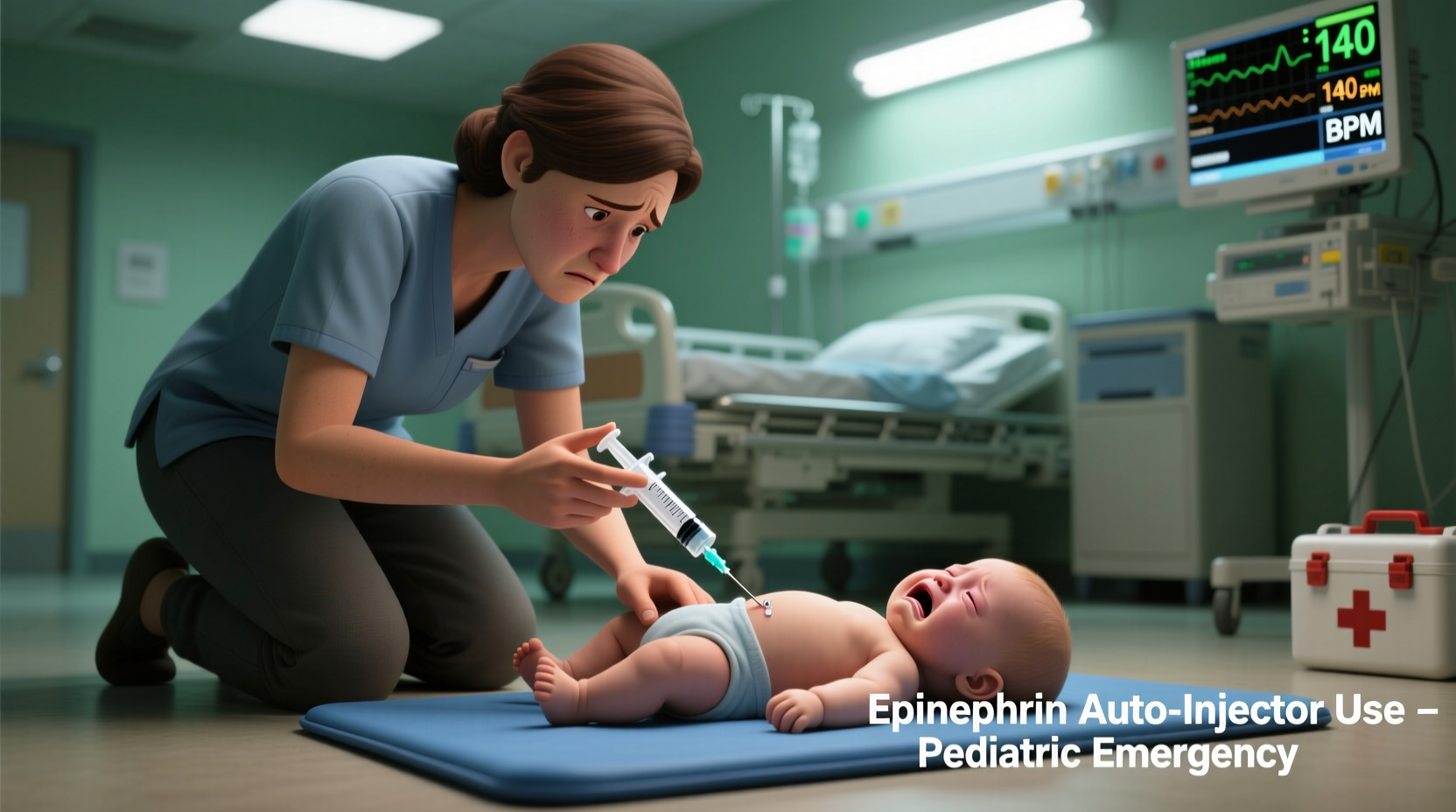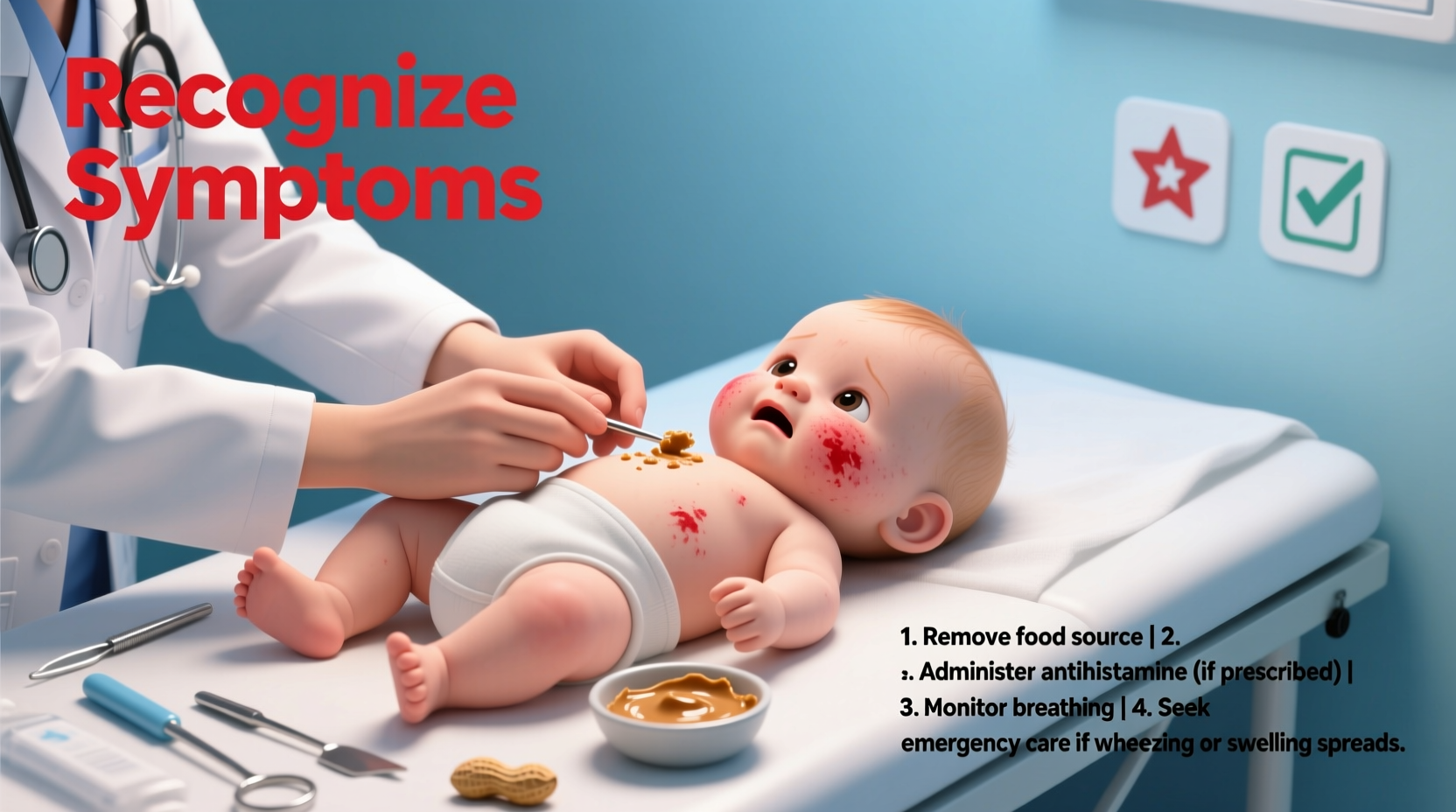Discovering your baby is having a food allergy reaction can be terrifying. As a parent or caregiver, knowing exactly what to do in those critical first moments could save your child's life. This guide provides clear, medically-reviewed steps to take during a food allergy emergency, helping you respond confidently when seconds count.
Recognizing Food Allergy Symptoms in Infants
Baby food allergy reactions typically appear within minutes to two hours after eating the problematic food. Understanding the progression helps determine your response level.
| Mild to Moderate Symptoms | Severe Symptoms (Anaphylaxis) |
|---|---|
| Localized hives around mouth | Widespread hives or swelling |
| Mild stomach discomfort | Severe vomiting or diarrhea |
| Slight facial redness | Swelling of lips, tongue, or throat |
| Runny nose | Difficulty breathing or wheezing |
| Mild itching | Sudden paleness or blue-tinged skin |
According to the Centers for Disease Control and Prevention, approximately 5.6 million children under 18 have food allergies in the United States, with milk, egg, and peanut being the most common triggers for infants.
Immediate Response Protocol: First 5 Minutes
When you notice symptoms, follow these critical steps in order:
- Assess severity - Check for breathing difficulties, widespread hives, or swelling
- Administer epinephrine immediately if prescribed and symptoms suggest anaphylaxis
- Call emergency services (911 in US) - state "suspected anaphylaxis in infant"
- Lay baby flat (unless vomiting or having breathing trouble) with legs elevated
- Monitor breathing and be prepared to perform infant CPR if needed
Never attempt to give oral medication during a severe reaction as swallowing may be impaired. The American Academy of Pediatrics emphasizes that epinephrine is the first-line treatment for anaphylaxis and should be administered immediately when symptoms suggest a severe reaction.

What Happens in the First 15 Minutes
Understanding the progression timeline helps you anticipate needs:
- 0-5 minutes: Initial symptoms appear; administer epinephrine if severe symptoms present
- 5-10 minutes: Symptoms may worsen rapidly; monitor breathing and circulation
- 10-15 minutes: Second dose of epinephrine may be needed if symptoms persist
- 15+ minutes: Emergency responders should arrive; provide details of reaction timeline
Research published in the Journal of Allergy and Clinical Immunology shows that delayed epinephrine administration correlates with more severe outcomes in infant food allergy reactions. Approximately 20% of reactions require a second dose of epinephrine.
After Emergency Care: Essential Follow-Up Steps
Once immediate danger has passed, these steps ensure proper ongoing care:
- Obtain a referral to a pediatric allergist for comprehensive testing
- Document the reaction including food consumed, timing, and symptoms
- Create a written food allergy action plan with your healthcare provider
- Train all caregivers on emergency response procedures
- Review proper epinephrine storage and expiration dates
The National Institute of Allergy and Infectious Diseases recommends that parents of children with food allergies maintain two epinephrine auto-injectors at all times, as reactions can require a second dose.
Preventing Future Reactions
While you can't prevent food allergies from developing, you can reduce reaction risks:
- Introduce common allergens early (around 6 months) under pediatrician guidance
- Read all food labels carefully, even for products you've used before
- Communicate clearly with daycare providers and family members about allergy protocols
- Carry emergency medication wherever you go
- Consider medical identification jewelry for your child
When introducing potential allergens, offer small amounts at home during weekdays when your pediatrician's office is open. The American Academy of Allergy, Asthma & Immunology confirms that early introduction of peanut-containing foods can reduce peanut allergy risk by up to 80% in high-risk infants.
Frequently Asked Questions
Parents often have these critical questions after experiencing a food allergy reaction:
How quickly do I need to use epinephrine during a baby's allergic reaction?
Administer epinephrine immediately when you observe symptoms of anaphylaxis such as breathing difficulties, swelling, or widespread hives. Delaying epinephrine increases the risk of a biphasic reaction. Always call emergency services after administering epinephrine, as effects may wear off before the reaction fully resolves.
What's the difference between a mild reaction and anaphylaxis in infants?
Mild reactions typically involve isolated symptoms like hives around the mouth or mild stomach upset. Anaphylaxis involves multiple body systems—such as skin (widespread hives), respiratory (wheezing), and cardiovascular (pale/blue skin)—and requires immediate epinephrine. Any breathing difficulty or throat swelling constitutes anaphylaxis regardless of other symptoms.
Can babies outgrow food allergies?
Many infants outgrow allergies to milk, egg, soy, and wheat, with approximately 80% outgrowing milk and egg allergies by age 5. However, allergies to peanuts, tree nuts, fish, and shellfish are more persistent. Work with a pediatric allergist to determine if and when to attempt food challenges under medical supervision.
Should I avoid introducing allergenic foods to prevent reactions?
Current medical guidance recommends introducing common allergens like peanut and egg around 6 months of age, as early introduction may actually reduce allergy risk. Introduce these foods at home during weekdays when your pediatrician is available, starting with small amounts. Always consult your pediatrician before introducing potential allergens to high-risk infants.











 浙公网安备
33010002000092号
浙公网安备
33010002000092号 浙B2-20120091-4
浙B2-20120091-4